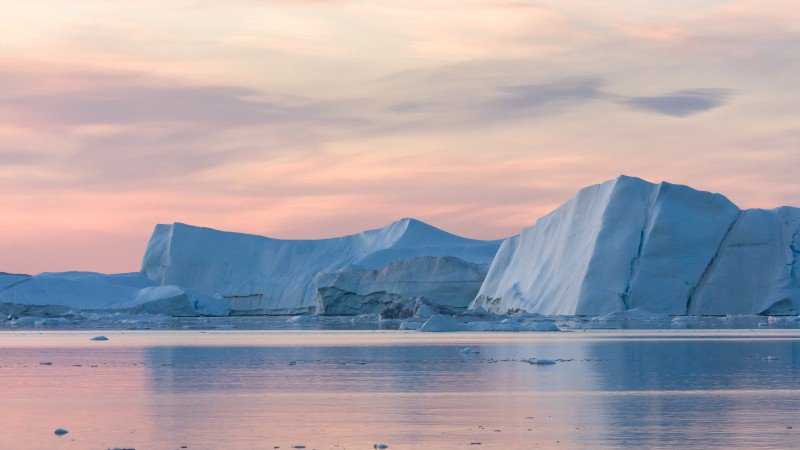
The Arctic may be one of the most grueling and cold places on earth, but it’s also one of the most magnificently beautiful. Photo: Jonatan Hedberg/Stocksy
“I’m glad I’m not going first,” says Darcy St. Laurent as he watches our teammate AJ step out onto a very thin, unstable piece of Arctic Ocean sea ice. The ice bows dramatically under AJ’s weight, and Darcy and I both watch, mouths agape, as he slowly shuffles his skis forward while a wave of rubbery ice pushes out in front of his ski tips.
Of all the dangerous things people do on planet Earth, North Pole expeditions easily top the list. One misstep could send us plunging into an icy abyss—almost immediate death. With conditions constantly changing, our margins for error are nonexistent. “You can’t think about these things too much,” my old dog sledding boss, Arleigh, used to say.
Safely across and on standing on more stable ice, AJ turns to pull his polar sled across the same sheet, creating several cracks along his ski tracks. Ocean water immediately seeps through. As unnerving as it looks, I still have some time to cross safely.
Sea ice is a fickle beast. Unlike freshwater ice, it has plasticity and will bend when you stand on it. But it’s integrity has limits. If any crack or break occurs, the stability of the entire area is sacrificed. Skiing across a sketchy ice sheet is like Indiana Jones racing across that hanging rope bridge as it falls apart beneath him. I look back Darcy and, with my best gallows humor quip, tell him, “I’m glad I’m not last!”
While over 6,000 people have summited Everest, only 250 people have traversed the Arctic Ocean from land to the geographic North Pole. It has a success rate lower than that of summiting K2. Since 2011, there has only been one team to reach the pole from land—that was the duo of myself and Ryan Waters, in 2014. We completed what may realistically be the last ever North Pole expedition in history.
To understand why this particular undertaking is so difficult, you need to know a little more…





